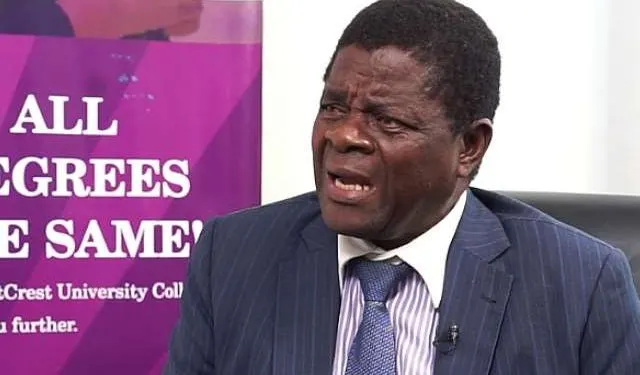The ongoing discourse surrounding the potential suspension of Ghana’s Chief Justice, Gertrude Torkornoo, has ignited a constitutional debate, drawing insights from legal experts like Kwaku Ansa-Asare, former Director of the Ghana School of Law. Ansa-Asare asserts that the President is constitutionally mandated to suspend the Chief Justice once a prima facie case is established and a disciplinary committee is formed, as stipulated under Article 146 of the 1992 Constitution. This interpretation follows Chief Justice Torkornoo’s formal response to petitions calling for her removal, submitted to both the President and the Council of State, meeting the April 7, 2025 deadline.
Ansa-Asare’s perspective centers on Article 146(7), which outlines the process of investigating petitions against the Chief Justice. He posits that once the President, in consultation with the Council of State, determines the existence of a prima facie case and establishes a committee, the subsequent suspension of the Chief Justice becomes an obligation, not merely an option. This assertion stems from his interpretation of the constitutional provision, which empowers the committee to investigate the petition and recommend to the president whether the Chief Justice should be removed.
The crux of Ansa-Asare’s argument lies in safeguarding the integrity of the investigative process. Allowing the Chief Justice to remain in office while under investigation, he argues, could potentially compromise the proceedings. The risk of interference, whether real or perceived, necessitates the Chief Justice’s temporary removal from office to ensure the impartiality and effectiveness of the committee’s inquiry. This precautionary measure aims to prevent any undue influence or obstruction of justice during the investigation.
However, Ansa-Asare emphasizes that suspension should not be automatic. The merit of the petition is paramount. He cautions against initiating suspension proceedings if the petition lacks substance or is deemed frivolous. The establishment of a committee and subsequent suspension are warranted only when a prima facie case exists, indicating a credible basis for the allegations against the Chief Justice. This careful approach underscores the importance of due process and prevents unwarranted actions against high-ranking officials.
The constitutional procedure outlined by Ansa-Asare involves a sequence of events. First, petitions are submitted, triggering a consultation between the President and the Council of State. If they concur that a prima facie case exists, a committee is formed to investigate the allegations. The formation of this committee, according to Ansa-Asare, triggers the presidential obligation to suspend the Chief Justice. This suspension is a protective measure, safeguarding the investigation’s integrity and ensuring a fair and unbiased process. The committee then conducts its inquiry and submits recommendations to the President regarding the Chief Justice’s potential removal.
This interpretation of Article 146 underscores the balance between upholding the principles of natural justice and maintaining the integrity of judicial processes. While the Chief Justice is entitled to a fair hearing and the presumption of innocence, the need for an impartial investigation necessitates her temporary removal from office once a credible case is established. This safeguards public trust in the judiciary and ensures that the investigative process remains untainted by potential conflicts of interest or undue influence. The debate surrounding the Chief Justice’s potential suspension highlights the complexities of applying constitutional principles in real-world scenarios, emphasizing the need for careful interpretation and adherence to due process.


